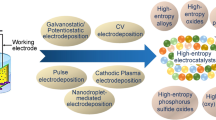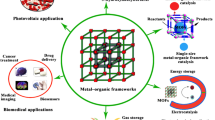Abstract
This paper describes the development of a rugged pH sensor that can be used to monitor hydrogen ion activity in an emulsion polymerization system under demanding reaction conditions. To inhibit deposition of the latex onto the sensor surface, a sensor was chosen to have the same surface charge as that on the latex particles at the pH of the emulsion system. An analysis of pzc (pH of zero charge) of the emulsion latex, as inferred from the zeta potential, the expected pH of the latex, and the known pzc values for various metal oxides, indicated that the W/WO3 electrode should be a viable pH sensor for the particular latex system of interest. It was concluded that the pzc values for both the latex and the pH sensor would lie below the expected pH of the latex, rendering the surfaces of both systems negatively charged. Coulombic repulsion should therefore inhibit the deposition of latex particles onto the pH sensor surface, thereby avoiding possible interference with the pH-determining reactions. Measurement of the W/WO3 sensor potential against a Ag/AgCl, KCl (sat.) reference electrode has shown that the sensor potential varies linearly with pH over a wide pH range, as established by various borate buffers, at temperatures of 25 °C, 70 °C and 130 °C. The slope of the potential versus pH correlation at each temperature is slightly less than the theoretical value indicated by the Nernst equation for a system at electrochemical equilibrium. This deviation, which has been noted in previous work on the W/WO3 sensor in homogeneous aqueous systems, is attributed to the fact that the sensor is not strictly at equilibrium, but instead displays a mixed potential. The W/WO3 sensor can be accurately calibrated over the conditions that exist in the latex system explored in this work and, while no independently measured pH data are available for the latex at elevated temperatures, the value determined by the W/WO3 sensor is consistent with expectations. To our knowledge, this work represents the first measurement of proton activity in a latex system under polymerization reaction conditions.
Similar content being viewed by others

References
L.B. Kriksunov, D.D. Macdonald and P.J. Millett, J. Electrochem. Soc. 141(11) (1994) 3002.
D.D. Macdonald, S. Hettiarachchi, H. Song, K. Makela, R. Emerson and M. Ben-Haim, J. Soln. Chem. 21(8) (1992) 849.
L.B. Kriksunov, and D.D. Macdonald, Sensors and Actuators B (Chemical) 22 (1994) 201.
S.N. Lvov, H. Gao and D.D. Macdonald, ‘Development of an Advanced Flow Through External Reference Electrode for Accurate Potentiometric and pH Measurements in Hydrothermal Systems’, Proceedings of the Fifth International Symposium on ‘Hydrothermal Reactions’, Gatlinburg, TN, 20–24 July (1997), p. 146.
S.N. Lvov, X. Zhou and D.D. Macdonald, J. Electroanal. Chem. 463 (1999) 146.
D.D. Macdonald and L. Kriksunov, Electrochim. Acta 47 (2001) 775.
D.D. Macdonald, unpublished observations, Ohio State University (1983).
Author information
Authors and Affiliations
Corresponding author
Rights and permissions
About this article
Cite this article
Macdonald, D., Liu, J. & Lee, D. Development of W/WO3 Sensors for the Measurement of pH in An Emulsion Polymerization System. Journal of Applied Electrochemistry 34, 577–582 (2004). https://doi.org/10.1023/B:JACH.0000021921.53458.b8
Issue Date:
DOI: https://doi.org/10.1023/B:JACH.0000021921.53458.b8



